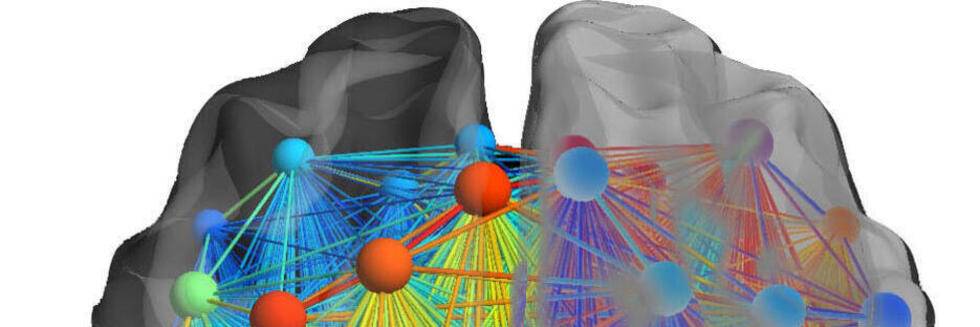




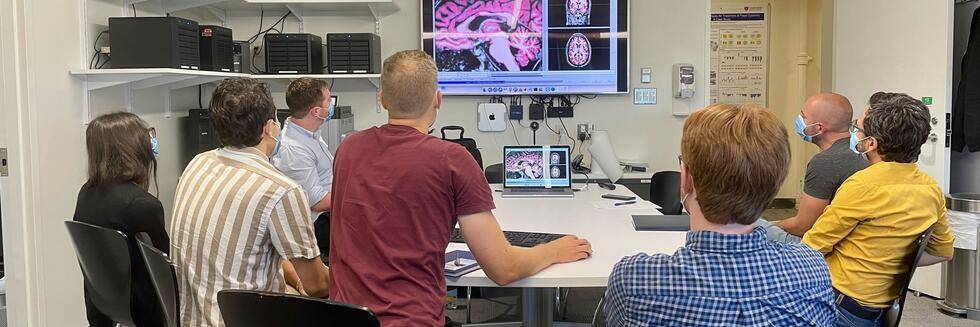





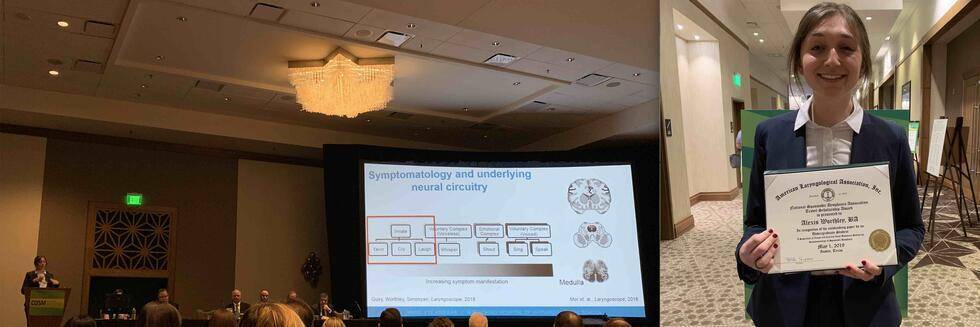



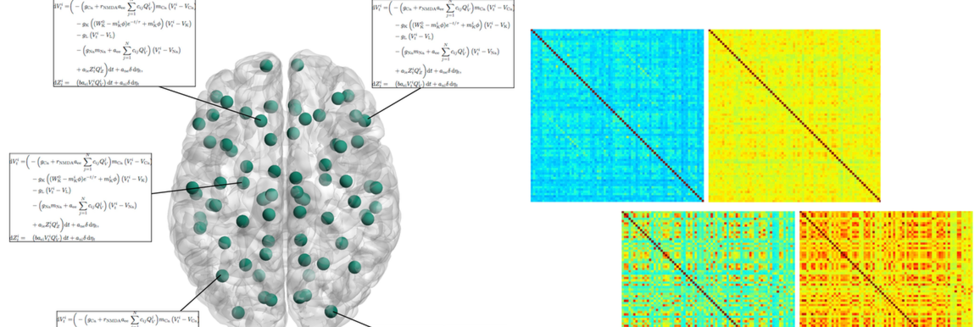





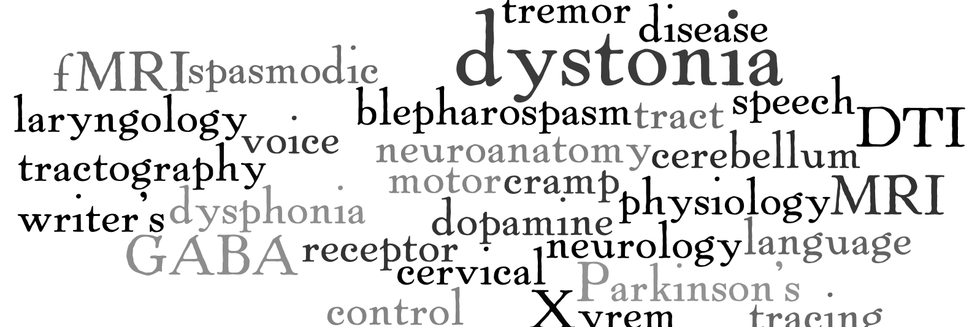

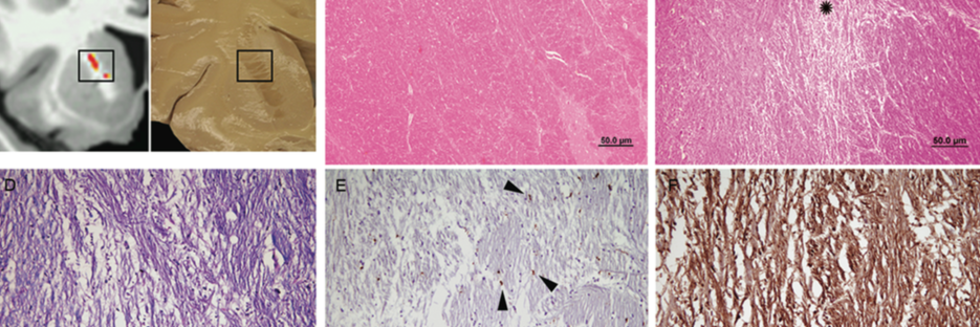

The Functional Connectome of Speech Control
Team Work
Connectome-Wide Phenotypical and Genotypical Associations in Dystonia
High-Frequency Brain Networks Undergo Modular Breakdwon during Epileptic Seizures
2019 American Laryngological Association
Alexis Worthley: Outstanding Paper Award
Volunteer for Research!
Dopamine Drives Left-Laterization of Neural Networks during Speech
Happy Birthday!
Focal White Matter Changes in Laryngeal Dystonia

We investigate neural mechanisms of isolated focal dystonia and tremor to determine the disorder-specific pathophysiology and develop novel diagnostic tools and therapeutic strategies for these patients. We use a variety of experimental approaches, including multimodal neuroimaging, advanced machine learning, clinical-behavioral testing, neuropathology, and genetics.
Explore our website to learn more about our research, discoveries, and team.
The Dystonia and Speech Motor Control Laboratory is supported by the National Institutes of Health - National Institute on Deafness and Other Communication Disorders (NIDCD) and National Institute of Neurological Disorders and Stroke (NINDS), Department of Defense, Amazon Web Services, Jazz Pharmaceuticals, Mass General Brigham Innovation.
Houston, we have a problem! Quality issues with neuroimaging-based machine learning in Parkinson’s disease: A systematic review. Movement Disorders (2024)
"Failure to breathe persists without air hunger or alarm following amygdala seizures. JCI Insight (2023)
Clinical implications of dystonia as a neural network disorder. Advances in Neurobiology (2023)
Temporal signature of task-specificity in isolated focal laryngeal dystonia. Movement Disorders (2023)
Sodium oxybate in alcohol-responsive essential tremor of voice: An open-label phase II study. Movement Disorders (2023)
DystoniaBoTXNet: Novel Neural Network Biomarker of Botulinum Toxin Efficacy in Isolated Dystonia. Annals of Neurology (2023)
Dr. Simonyan Named Next Incumbent of John W. Merriam and William W. Montgomery Professorship - Harvard Medical School and Mass Eye and Ear | July 12, 2024
14th Annual Sense-ation! Gala: Dr. Simonyan and Her Lab's Research on Laryngeal Dystonia (Spasmodic Dysphonia) Are Featured - Mass Eye and Ear | October 4, 2023
3rd Annual Meeting of P50 Clinical Research Center
September 19th-20th
The third annual meeting of the NIH/NIDCD P50 Clinical Research Center will be held on September 19th-20th, 2024, at Massachusetts Eye and Ear in Boston, MA.
Along with the presentations and discussions of the work conducted by the Center investigators, the line-up of this year’s guest speakers includes Dr. Sajan Lingala (University of Iowa), Dr. Dan Rubin (Massachusetts General Hospital), Dr. Andres Horn (Brigham and Women’s Hospital), and Dr. Eric Rosenthal (Massachusetts General Hospital).
The meeting will be held in person and is open to the public.
Virtual Presentation by Dr. Steven Frucht – Dystonia: Back to our Roots
September 5th, 4-5pm EDT – Dr. Frucht from NYU Langone Health presented a seminar, "Dystonia - Back to our Roots" as part of our seminar series. This event took place online.

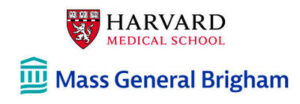 Dystonia and Speech Motor Control Laboratory | Department of Otolaryngology-Head & Neck Surgery, Massachusetts Eye and Ear and Harvard Medical School | 243 Charles Street, Suite 421 | Boston, MA 02114 |
Dystonia and Speech Motor Control Laboratory | Department of Otolaryngology-Head & Neck Surgery, Massachusetts Eye and Ear and Harvard Medical School | 243 Charles Street, Suite 421 | Boston, MA 02114 |